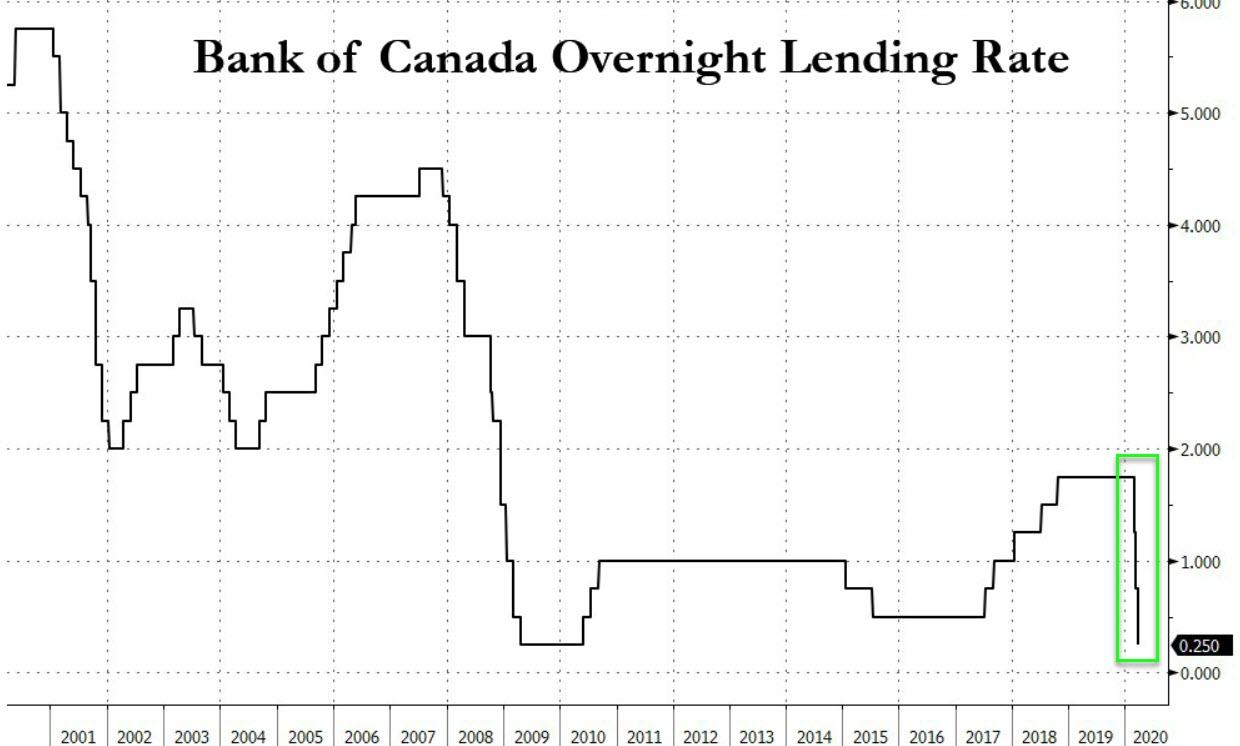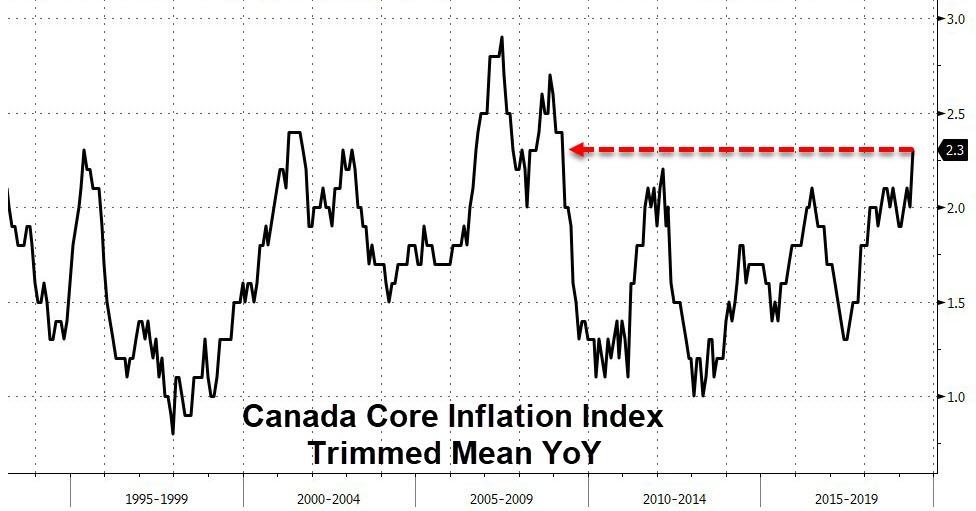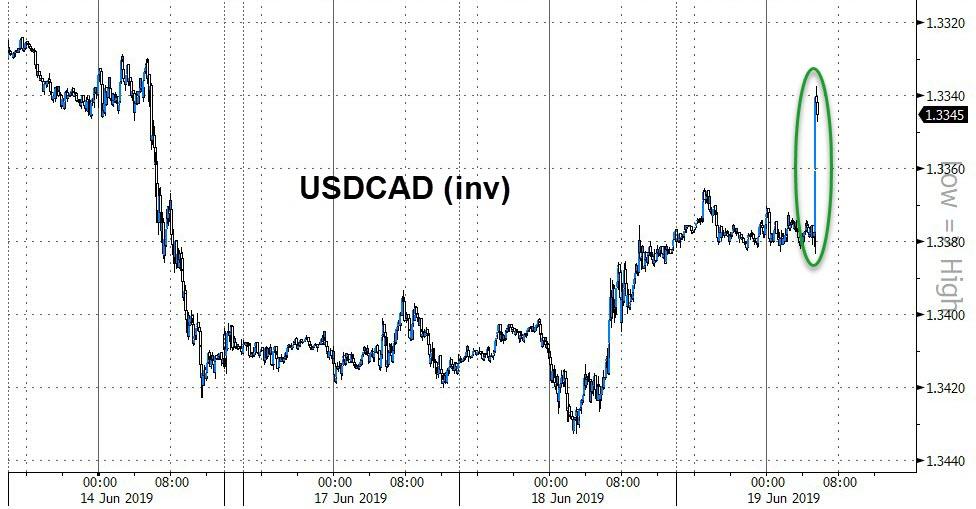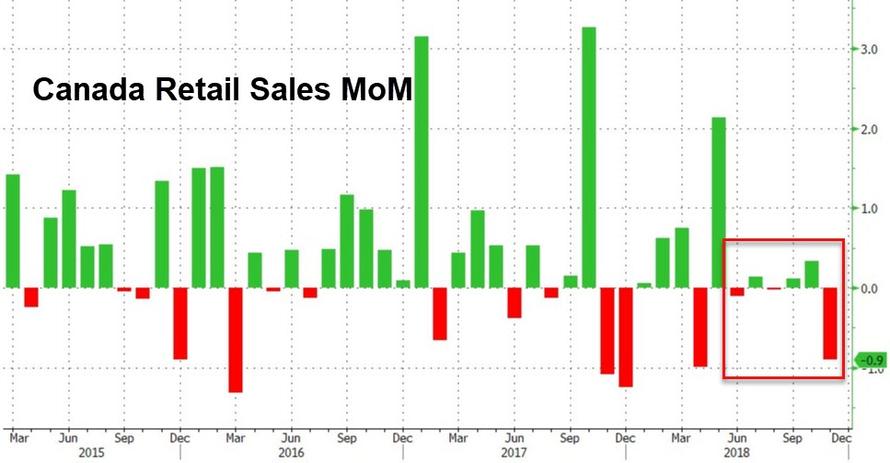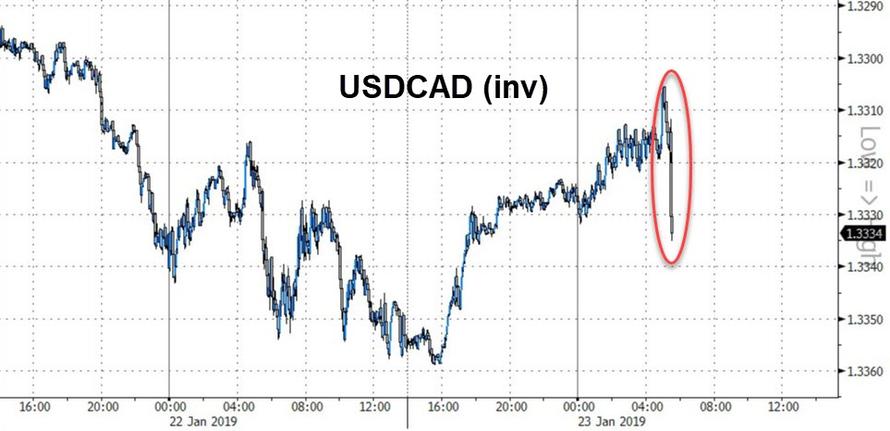Amid near-record-low Canadian crude prices and a housing crisis, The Bank of Canada appears to have finally given up its narrative that ‘everything is awesome’.
The BoC walked back much of its enthusiasm about the nation’s outlook in a decision that kept interest rates unchanged, spinning bad news as good by saying that the economy may have “additional room for non-inflationary growth.” Of course, if the economy was growing faster, the BOC would simply say that the economy is growing… well, faster or “near potential.”
Instead, holding rates unchanged at 1.75%, the BOC cited almost everything that has gone wrong:
- moderating global growth,
- a “materially weaker” outlook for the oil sector,
- a faster-than-expected deceleration of inflation,
- a drop in business investment and downward historical revisions to output
Following the latest central bank dovish relent, the USDCAD jumped 0.8% to ~1.3374 after touching highest (i.e. the CAD dropping the most) in more than five months on the cautious language, a dovish outlook that could change expectations for 2019 BOC rate hikes.
Even with the dovish undertones, the statement reiterated that rates will need to rise to “neutral range” – which like the Fed it has no idea what it is – within its discussion of recent downside risks, to wit:
“Governing Council continues to judge that the policy interest rate will need to rise into a neutral range to achieve the inflation target.”
Still, the generally less-confident tone is an acknowledgement of developments over the past few weeks that have cast doubt on the strength of the nation’s expansion and prompted investors to scale back the expected pace of future rate increases.
The final nail in the hawkish case coffin was the key shift in tone (red rectangle below) which notes that while the Canadian economy growing in line with expectations, “data suggest less momentum going into the fourth quarter.”
…click on the above link to read the rest of the article…


